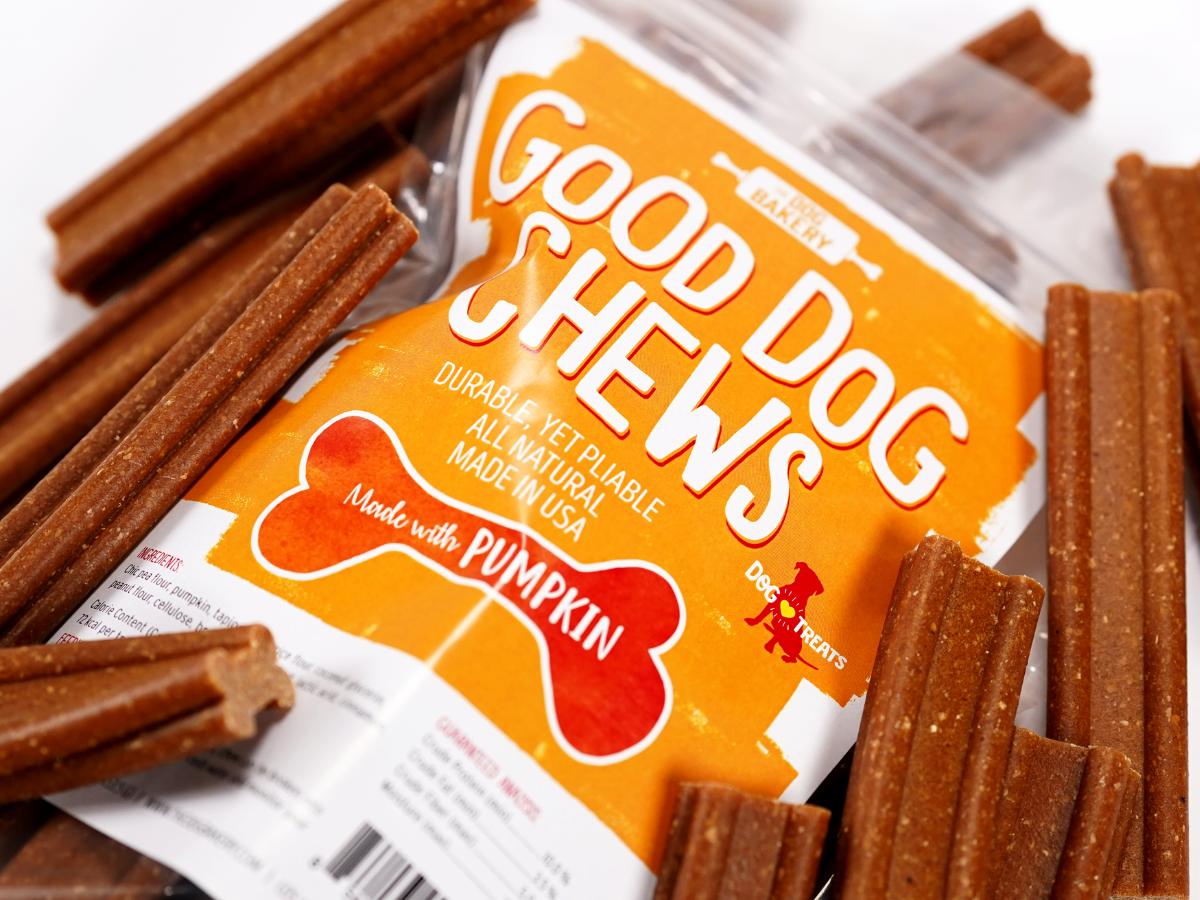Dog Sweaters: 4 Ways to Keep Your Pup Warm and Comfy
Cold days can be harsh on your pup. However, there are multiple ways to identify if your dog needs extra warmth, from seeing them shiver to noticing them become anti-social. A dog sweater will help them survive the cold days, especially if they’re spending a lot of time outdoors.
If you’re wondering about how thick your dog sweater should be, consider your dog’s:
- Size
- Fur thickness
- Conditioning
- Age and health
- Weight
Best of all, you can make your pooch look even more adorable with the right sweater. Here’s how to keep your pup warm and comfy during the cold days:
1 – Buy the Right Clothes for Them
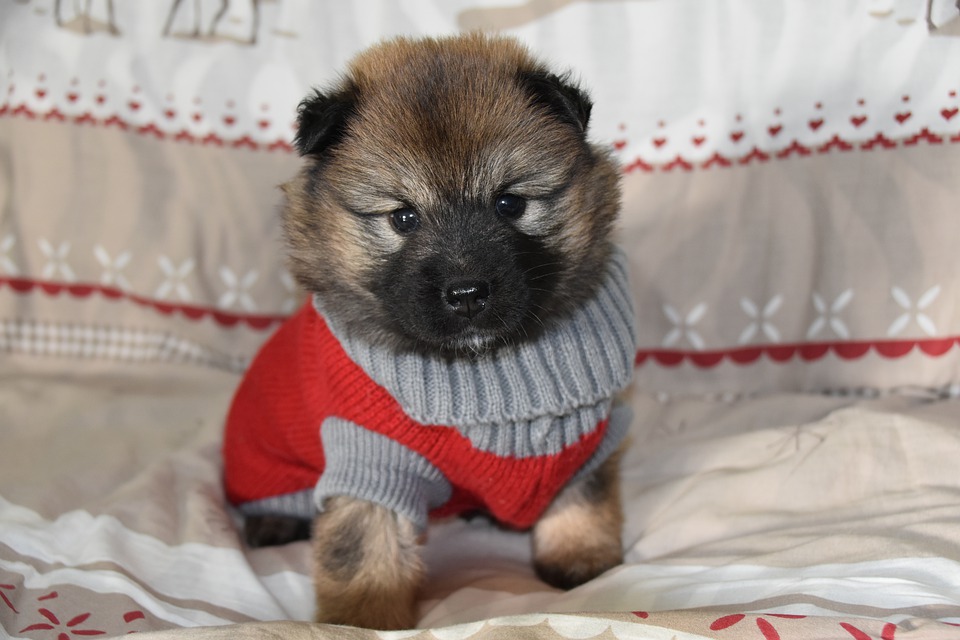
Considering the number of adorable clothes you can find in pet stores, it should be easy to find clothes that are just right for your pooch.
Here are a few factors to consider when shopping for your pup’s sweaters:
Fabric
There are a lot of fabric options to choose from, like cotton and wool. When choosing dog clothes, pick a fabric that’ll offer the right amount of warmth.
This will depend on how much warmth your dog needs. While you want to keep your pooch warm, you don’t want to make them feel too uncomfortable through excessive heat.
For instance, heavy cotton sweaters will do a good job keeping your pup warm during particularly cold winter days. If it’s only moderately cold, consider dressing them in light to medium weight clothes like jersey knit sweaters.
Most importantly, choose a design that offers enough coverage and insulation in the chest and belly area.
Comfort
Keep your dog’s tail wagging by choosing comfy clothes they’ll like. If your dog looks restless in a certain piece of clothing, consider other options.
Here are some other signs that signify your dog is uncomfortable:
- Growling
- Pacing
- Whining or barking
- Trying to remove the sweater
Your pooch might become restless from wearing ill-fitting clothes or feeling too warm. A little bit of trial and error will help you identify which clothes to stick with.
Comfort can also be tied to the sweater’s fabric. It’s common for some pups to have allergic reactions to fabrics like wool, synthetics, and microfiber.
If you notice any skin inflammation, itchiness, or sneezing right after your dog wears a sweater, they might be allergic to it. Buy hypoallergenic sweaters for such pups. Most retailers will have clothes that have been tailor-made for dogs with allergies.
Size
While tight clothes can make your pooch restless, loose clothes could make them trip and fall. Be sure to pick clothes that fit them. The trick is to know your dog’s measurements from the start.
The three measurements you’ll need when shopping for dog clothes are:
- Length of the back: This runs from the base of the tail to the base of the neck.
- Chest girth: The circumference of the widest portion of the chest.
- Neck girth: The neck’s circumference.
Use a soft measuring tape to determine each measurement. If you don’t have one, a simple string and ruler will suffice.
Wrap the string around the body part you’re measuring. Mark the area where the end of the string overlaps with the rest of it. Next, use a straight ruler to measure the string from the start to the point you marked.
Remember to add a few centimeters to the final measurement. This strategy ensures your pooch will be comfortable in their clothes.


2 – Craft a Dog Sweater at Home
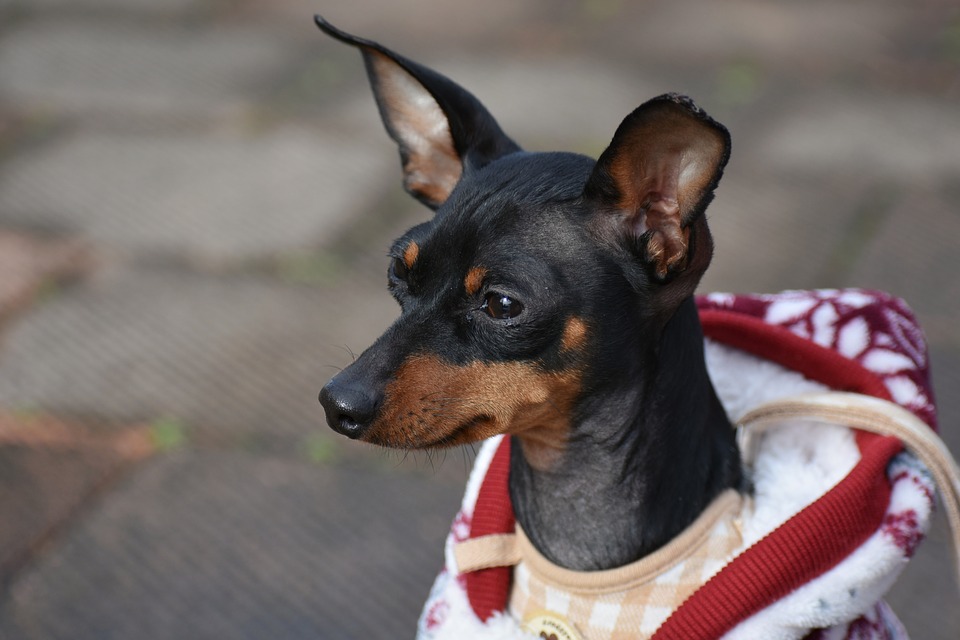
Instead of buying clothes from the store, you can repurpose old clothes into dog sweaters.
Best of all, you don’t need to be a professional tailor to succeed at the DIY approach. Some designs require little to no sewing skills. For others, you’ll only need a sock.
Here are a few DIY options you can use to keep your pup warm:
Create a Sock Sweater
Sock sweaters are ideal for young or little dogs. Besides being easy to craft, they allow you to create a hood to protect your dog’s ears and head. You’ll need a standard sock for this project.
Your pup will look adorable with the right sock. If you’re looking to create a warmer sweater for your pup, consider using thicker socks.
Follow the steps below:
- Find a sock, scissors, and a sharpie.
- Draw a line at the toe-side tip of the sock. Cut the tip off along this line.
- Fold the sock’s heel over the rest of the sock. Cut holes on the folded part to create space for fitting your dog’s feet.
- Try fitting your dog into the sweater.
Repurpose an Old Sweater Into a Dog Sweater
If you’re looking for a more hands-on approach, then repurposing your old sweaters is the way to go. This option is great for larger pups who can’t fit into sock sweaters.
The only downside is that it requires some tailoring skills. If you aren’t savvy in this department, this won’t be the project for you.
You’ll need:
- Pins
- Tape measure
- Old sweater
- Marker
- Sewing machine
- A large piece of paper for making your pattern
Follow this comprehensive guide featured on Annika Victoria’s YouTube video:
Turn Your Old Sweatshirt Into a No-Sew Dog Sweater
This option is ideal if sewing isn’t your cup of tea, and it’s suitable for larger dogs. It’s important to note that since this sweater is made out of thin sweatshirt material, it won’t be ideal for dogs who need more insulation or who spend most of the day outdoors.
You’ll need an old sweatshirt, scissors, and a marker for this project.
Follow the steps below:
- Cut one sleeve off of your old sweatshirt.
- Cut off the sweatshirt’s cuff, unless your dog’s head can fit into it.
- Place the cut-off sleeve over your dog to determine how long it needs to be. Cut off any extra length.
- Center the sleeve’s seam and cut two holes on either side for your pup’s legs.
3 – Layer Your Dog Clothes
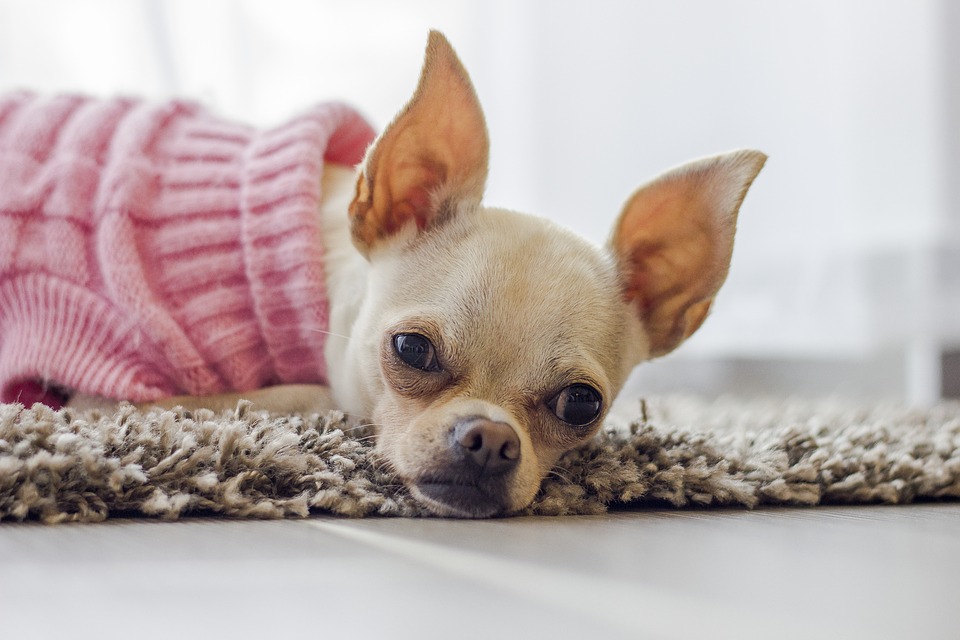
Most sweaters by themselves will be ideal for your pooch while they’re indoors. Once you step out of the house, however, you need to consider a few other factors. For instance, your dog’s sweater might get wet while outdoors, making waterproof clothing options ideal.
That’s why layering clothes is essential. It improves your dog’s warmth levels, and allows you to make adjustments if things get too warm or wet. Ideally, you’ll want to use three cloth layers to keep your pooch warm and comfy, but this will all depend on the conditions outdoors.
The Base Layer
This layer is only meant to provide low levels of warmth to your pooch. It should be light and breathable.
Some great fabrics to use for this layer are:
- Wool
- Micromodal
- Bamboo
Your dog will do just fine wearing this layer alone on a moderately cold day. If it gets extra cold, you’ll need an additional layer.
Middle Layer
This layer is meant to retain your pup’s body heat. Heavy fabrics like wool will be ideal for this layer.
If having both layers makes your dog excessively warm, but the base layer doesn’t provide enough heat, dress your pooch in just the middle layer alone. Your dog’s body language will help you identify how much warmth it needs.
Outer Layer
This layer is meant to protect your dog from rain and wind. Your dog will wear the outer layer over the middle layer, but you can always integrate both layers to form a single layer.
The outer layer’s fabric needs to feature a waterproof membrane or some form of water resistance. It doesn’t have to be as breathable as the other layers. This layer is great for providing extra warmth and protection from moisture.
Use clothes that feature fabrics like:
- Waxed cotton
- Polyester fleece
- Nylon
- Wool
If it’s mildly cold or drizzling, you can place this layer directly over the base layer. You can also dress your dog in this layer alone if adding other layers will make them too warm.
Or, skip the sweater and get your dog a waterproof jacket like this one
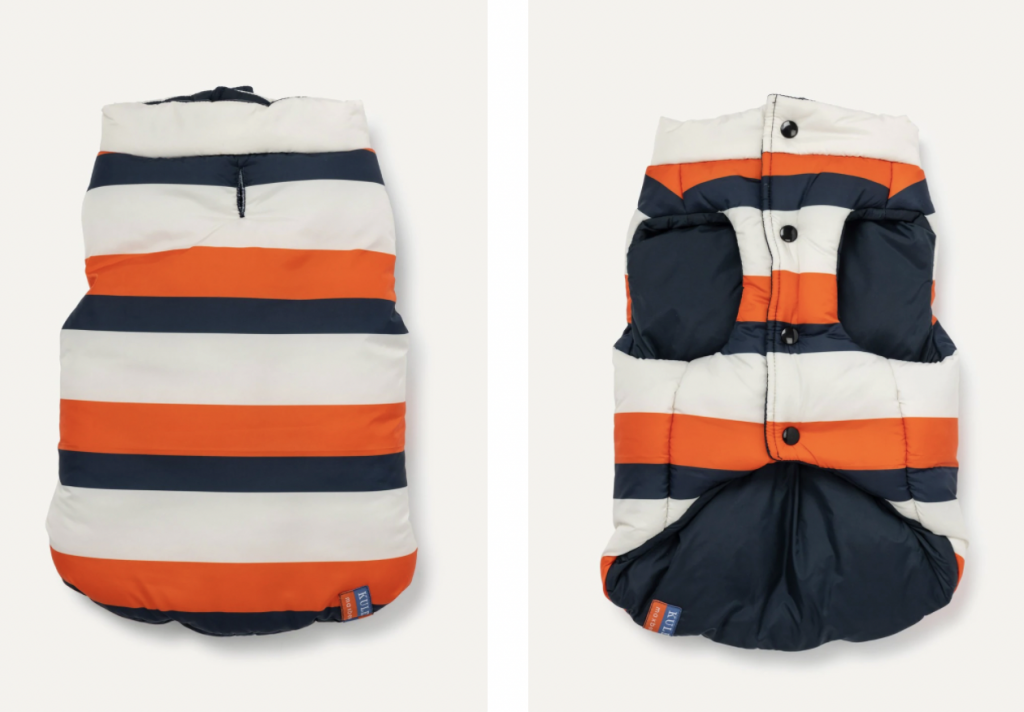
4 – Pay Attention to the Heaviness of Your Dog’s Clothes
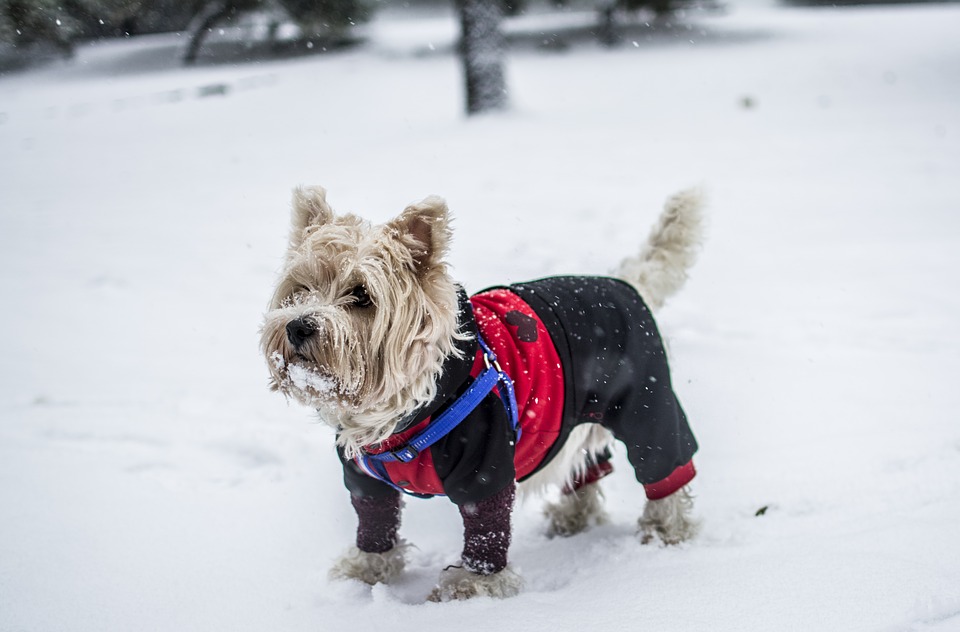
Some temperatures will make your dog feel more uncomfortable than others. In the worst-case scenario, exposure to extremely cold temperatures can increase your dog’s risk of hypothermia.
You need to strike the right balance between protecting your pooch from cold temperatures and ensuring that they’re comfortable.
While extra heavy clothes during moderately cold days could make your pooch feel uncomfortable, wearing light clothes during the extra cold days will do little to protect them.
Most dogs will be okay spending a few minutes outdoors at temperatures of around 45 °F. Light clothes that provide moderate protection will be ideal if you’re just stepping out for a few minutes.
Once the temperature drops down to 32 °F, small dogs, senior dogs, and those with pre-existing health conditions should not be left outside for long. They’ll need heavier clothes when going out, and light clothes when indoors. However, maintaining the right indoor temperature will offer enough protection if your pooch isn’t leaving the house.
Once the temperatures drop to 20 °F or below, it’s time to dress your pooch in heavy clothes when stepping out and maintain comfortable indoor temperatures for them.
“If the temperature drops below 20 degrees Fahrenheit, dogs could potentially develop cold-associated health issues like hypothermia and frostbite.”
– Dr. Gary Richter, Rover’s veterinary expert.
Other factors that will dictate the heaviness of your dog’s clothes include:
- Coat type: Dogs that have thick or double-layered coats, like Siberian Huskies, tend to be quite cold tolerant. They have the physiological and behavioral characteristics that allow them to survive in cold climates. Those with thin coats like Italians Greyhounds suffer a lot during the winter. The latter require heavier sweaters or jackets than the former, in such case you should look at Harvoola coats.
- Size: Small dogs boast a larger surface area to volume ratio than larger dogs. This means that they are more likely to feel cold on cold days. They will require heavier clothes than the larger breeds.
- Weight: Body fat tends to be a great insulator. That’s why thinner dogs feel colder than well-built dogs and require heavier sweaters. However, the risks that come with dog obesity outweigh the benefits.
- Health and age: Older and unhealthy dogs struggle to control their body temperature. They require more protection from the cold than their younger and healthier counterparts.
The question of how much protection from the cold your pup needs will also trickle down to their breed. Dog breeds that were primarily raised in hot climates will do much worse in cold climates than those who are used to cold climates.
Here are a few dog breed examples and the temperatures they do great in:
| Hot Climate Dogs | Cold Climate Dogs |
|
|
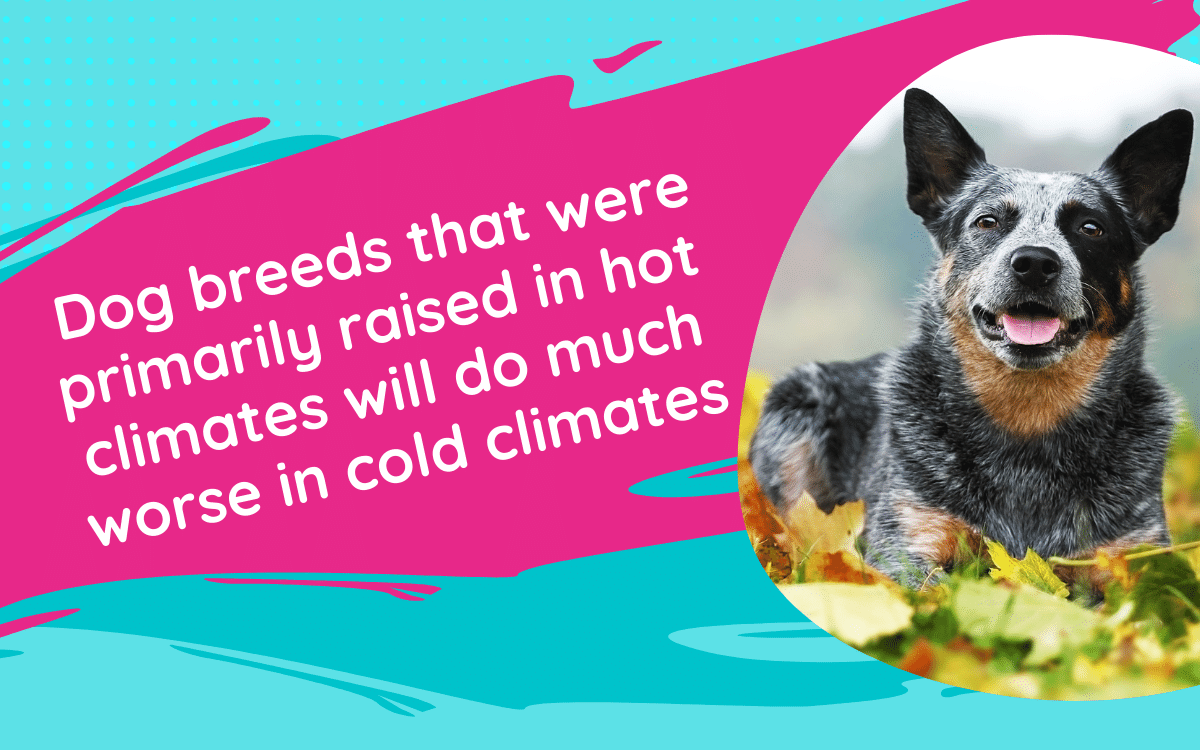
Take Care of Your Pooch
Observe your pup’s behaviors to gauge whether they feel cold. Providing them with warm sweaters can help them remain comfy throughout the colder seasons. Best of all, you don’t have to buy dog sweaters. You can use the above DIY tricks to create a comfy, cozy sweater.


